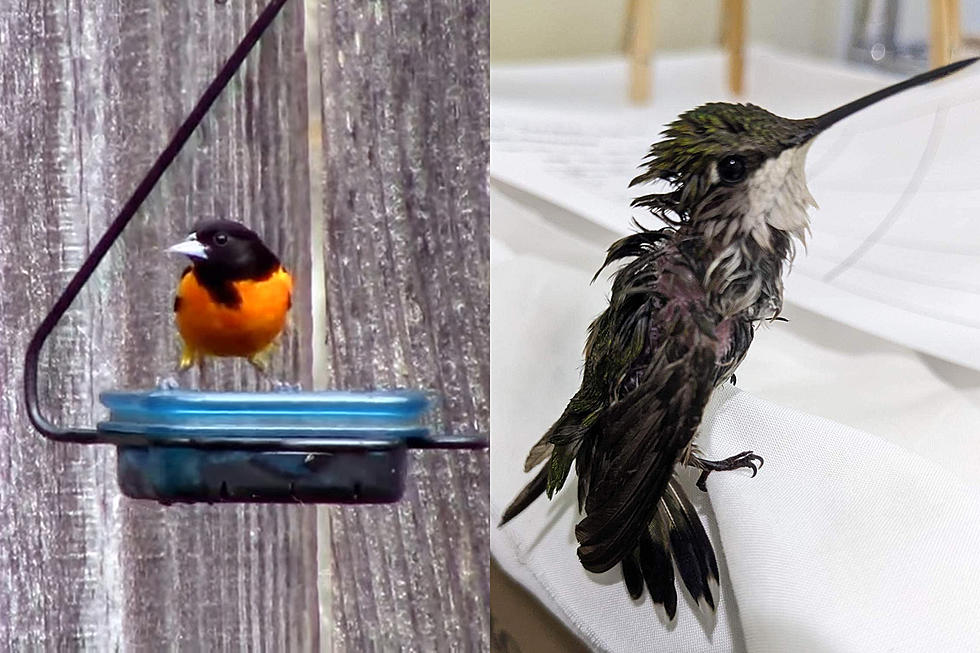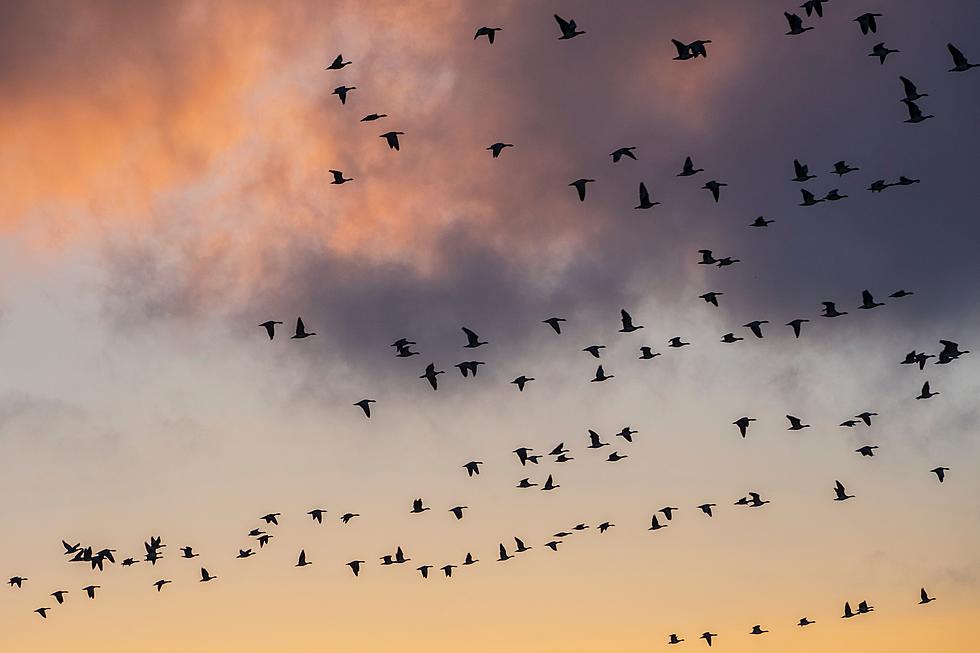
Bird Rehabilitation Group Urges Bird Lovers To Stop Feeding Grape Jelly to Orioles
A Wisconsin bird rehabilitation group is warning people in Minnesota and Wisconsin to stop feeding grape jelly to orioles and other birds, as it is causing unintended harm.
The trend of putting out some grape jelly or other similar jelly for fruit-loving birds has grown over the years, with some birdfeeders even offering a place specifically designed to hold jelly. Birds like orioles, warblers, thrashers, catbirds, and other birds love the sweet fruit-based treat. While these birds love the high-energy food, it is leading to unintended consequences for some feathered creatures.
The Raptor Education Group Inc. (REGI), a Wisconsin nonprofit dedicated to the care and rehabilitation of wild birds and public education about these creatures, issued a message on Facebook at the beginning of June that explains that while there are some benefits to this trend, it is also leading to harm for some birds, such as hummingbirds.
Why do people put out grape jelly for birds?
In recent years, bird lovers have started putting out grape jelly for orioles and other fruit-loving birds as an alternative to putting out pieces of fruit, like orange slices or halves of oranges.

The idea behind this is that it is a convenient high-energy food for birds that would easily keep in a container put outside.
While initially geared toward orioles, a number of bird species have been drawn to the sticky food source. Included in that are hummingbirds, who appreciate the sweet food, but is leading to problems.
One bird lover shared a video of some of the varieties of birds that have been drawn to jelly he's put out, including orioles.
What's the issue with putting out grape jelly?
REGI explains that there are two key issues with putting out grape (or other) jelly.
The first issue is that hummingbirds and some other birds will get the sticky substance on their feet and/or feathers, causing harm.
The organization explains that they've recently admitted three adult ruby-throated hummingbirds from different areas, all within a short span of time this year. All three of the birds were covered in a coating of grape jelly, leading to considerable struggles for the birds. One of the patients had actually deceased on arrival, while the others needed care. These three hummingbirds are a few of what they see as a growing trend.
You can see a couple of photos published by REGI, showing the effect on their feathers and attempt to clean the mess off of them.
Separately, a 2019 article from Bird Watching Daily highlighted a red-breasted nuthatch that had a similar issue as the hummingbirds REGI treated this spring.
In addition to the dangers to hummingbirds, the person from REGI that wrote this Facebook post also explained that while grape jelly (or other jelly) can be a convenient energy source for birds during migration season, it can be a significantly less healthy option when compared to actual fruit, which was the standard to feed these birds for a long time. They also say timing is important, as explained below.
What should bird lovers do?
The post's author asks that bird lovers consider not feeding jelly year-round, pointing out that oriole migrations are at earlier and later times than hummingbirds, making it a viable option during their migration, but something that should be stopped when hummingbirds arrive. The author also points to "bird safer" jelly options that are available from some retailers if you do plan to feed jelly.
The author of the Facebook post admits that bird experts are still weighing out the pros and cons of jelly feeding, but that it is something you should consider the benefits and consequences to before proceeding to feed, especially year-round.
On the note of the hummingbirds that REGI treated, one sadly died, however, the other two were described as "alive but struggling" on arrival, with treatment administered to get them cleaned up and back to health.




